Fringe Review: The Terran Trade Authority Roleplaying Game from ZDL's blog
Today's game is The Terran Trade Authority Roleplaying Game (henceforth TTARPG – and yes there's a reason why I'm using such a clunky initialization) released by Canada's Morrigan Press in 2006. It's a science fiction RPG that …
Let's roll back the history a bit, because this is really unusual.
History
In 1978, Hamlyn Publishing released a book called Spacecraft 2000-2100 AD by Stewart Cowley. It was a large, hardback art book filled to the brim with science fiction artwork of spaceships, planetscapes, and future cities/bases that were rendered by some of the greatest SF artists of the time: Angus McKie, Gerard Thomas, Chris Foss, Peter Elson, and others represented by J.S. Artists.
More than an art book, however, it was also a detailed future history with little vignettes of space battles, a future history, etc. all paired with pictures showing the subject. It was a brilliant concept that was well executed, leading to more books in the series authored by Cowley—Great Space Battles (1979, with Charles Herridge), SpaceWreck: Ghostships and Derelicts of Space (1979), Starliners: Commercial Travel in 2200 AD (1980).
All of these books were tied together in a future history involving the name of the Terran Trade Authority (TTA) hence the name of the RPG.
Translations and repackagings aside, that was the end of the TTA. Other books in a familiar-looking setting were produced, but not explicitly tied to the TTA setting and, frankly, they weren't, for the most part, as nicely produced.
And then everything went silent.
Silent, that is, until 2006. Morrigan Press, after its release of the 5th Edition of Talislanta, started work on an ambitious project to republish the entire TTA catalogue. Since the original artworks had long since reverted copyright back to their artists there was no way to republish the books in their entirety, so the plan was to use CGI to recreate the feel of the setting for an RPG. The first publication in this project was Spacecraft 2100 to 2200 AD which put the setting forward a hundred years with 3D illustration by Adrian Mann and writing by K. Scott Agnew, Jeff Lilly, and Steward Cowley providing consultation. It was a rushed product full of errors, both typographical and grammatical, that received lukewarm reactions, but they persisted and published TTARPG in late 2006. (Sadly the Local Space: 2200 AD guide book was never published because Morrigan Press was hit by financial difficulties that ended all of their publishing projects.)
And as for the reaction to the RPG, this review is part of it.
The Basics
I am reviewing the PDF edition of the game, having only ever once seen the physical edition, which is probably good given that it's a 400+ page book (rather like later editions of Talislanta … this is foreshadowing). It has a full-colour cover illustrated in the 3D CGI style of the 2006 TTA book, designed to look like the '70s-era space art that inspired the original book and, to be fair to it, the unnatural smoothness aside, it does have the right feel.
Internally the book has single-column text in a readable font with a bit of a distracting grey-scale art pattern on the edge. (Something about it just attracts my eyes away from the text which is kind of a bad idea.) It has a decent table of contents for quick navigation at the beginning and a *sigh* "index" at the back which is really spartan.
Unfortunately that table of contents highlights in stark relief one of the major flaws of this game.
Information dump
There are 417 pages in this book. Starting on page 5 and ending on page 93 is a huge information dump about the setting: future history, locations, the titular Terran Trade Agency, etc. Almost a quarter of the book, right at the front, is devoted to setting information. Page after endless page there is droning text about wars, places, organizations (but, tellingly, not people!) which really starts dragging. Unlike the books the game is based on, this future history is not paired with colourful illustrations that attract the eye. There are some, but nowhere near enough given the sheer volume of information. The result is intense tedium. I had to re-read it for this review and it almost dissuaded me from doing it.
And that's only just the start!
Game System
The game rules start on page 94, ostensibly. They drone on endlessly as well, introducing a simple game system in the most tedious and dull fashion imaginable. The game is termed the "Omni System" but anybody who's ever followed Talislanta will recognize the system instantly. Let's see if this rings any bell: 0-centric attributes, d20 rolls, modify for skills and situation, read the results on a table with 0 or less being a mishap, 1-5 being a failure, 6-10 being a partial success, 11-19 a success, and 20 or more a critical success.
Characters are defined by the attributes Intelligence, Will, Strength, Constitution, Perception, Charisma, Dexterity, and Speed rated generally in the -5 to +5 range. (Ringing any bells, Talislanta fans?) There are secondary (calculated) attributes called Combat Rating, Ranged Combat Rating, Psi Rating, Piety, Renown, and Hit Points. (Again, players of Talislanta will recognize many of those either directly or by an echo.)
The game system is simple. I've already outlined everything important above. Specifics involve minor procedural lists that can be summarized in a single page and explained in perhaps three. For sake of more completeness, naturally, in case someone picks up the game who's never played an RPG before, this would have to be expanded, but these rules are 40 pages long for this basic game. Then there's 15 pages for the psionics system that isn't even used in the setting (!). Then there's an additional 34 pages of skills and quirks.
(Have you noticed yet what's missing?)
Information dump (reprise)
Then, finally, we hit character generation. On page 183 you finally get to learn how you actually make a character for this game. You've been fed almost 200 pages of dry text, barely broken up by small amounts of illustration, none of it of any real interest because you still don't have an avatar for this setting. Finally, on page 183, you get to start making a chara…
Oh for…! GOD DAMMIT!
See, to make a character you need to pick one of the races: Alphans, Proximans, and Terrans. (The latter is human, in case that wasn't obvious.) 30 pages of information are dumped about the Alphans. Then there is 30 pages devoted to the Proximans. Finally there is 18 pages devoted to humans.
This game thinks you need 18 pages to explain humans to … well … humans. This is verging on actual insanity.
There is less than one page of information in those info dumps that actually involve making the damned character! There's more than that devoted to the Alphan language alone (3 pages)! You have another nearly 80 pages of info dump to go through just to get the roughly page and a half of actual information you need to make your character.
Rant mode on
And this is in the section actually entitled Character Creation! This is one of the worst pieces of information design I have ever seen! The most frustrating part of it is that none of this is bad. This is good stuff! This is the kind of thing I like to see in games that have rich, colourful settings. Games like Talislanta, Jorune, Tekumel, and others in that vein. But I should not have to go through 264 pages of this before I can even start thinking about what my character's past and personality are like! Were this game organized sanely it could very well be one of my favourites, but the way it is written and edited I'm just incredibly frustrated every time I look at it. There is a reason it is a fringe game, and it's not only because of Morrigan Press' financial difficulties!
Deep breath…
OK, that's out of my system. Again, anybody who's played specifically Talislanta's 5th edition will recognize what comes next. Species selected, the next step is "paths". Paths form the complete life history of your character and together build up a character's stats and skills in ways that can make each character unique. This solves one of the problems I had with earlier editions of Talislanta, in fact, where two characters from the same race were basically the same. The 5th edition fixed that and this game continues in that vein.
There are paths for regions of birth, family background, careers, and personalities. Paths result in adjustments to attributes, skill ranks, quirks, starting gear, and other such things. Some paths have pre-requisites (either in attributes/skills or in previous paths). An example path makes this clearer: Asteroid Miners must be Terran or Proximan; get +2 to Strength and +1 to Constitution; get 12 skill ranks to be distributed into preferred skills like Climb, Computers, Demolitions, Profession (miner), etc. (it should be noted that skills can be taken outside of these preferred ones, but they're more expensive); allow quirks to be chosen from ones like Alcohol Tolerance, Good Balance, Windfall, or Zero-G Training;j and give starting gear like a berth aboard a mining station/installation, mining tools, a canteen; and 500 credits of cash. (The lists given are not exhaustive, only illustrative!)
Interestingly, this is where information design is done well. Each path takes up about 2/3 of a page. After the title, each path is given a paragraph to explain what the path entails, then a well-structured list of what the path entails. This is the kind of information design the entire game needed, but sadly didn't get.
(Wouldn't it have been nice to know these numbers and how they're made before having the game system exhaustively explained to me? Nothing quite beats having a character sitting there with hard numbers to plug into game systems when learning them…)
Sundries
And then we're back in the info dump. Starting on page 283 and going on to page 327 we have equipment. Pages 328 to 375 are spacecraft rules and stats. If you're expecting another rant about information dumps, look elsewhere. This is properly designed.
First, this is the right part of the book to put this kind of information. Characters are made and game systems are explained. The equipment that's used by characters in game systems should be placed here. For the first time this game got things in the right order.
Second, as with the paths, this is well-designed. It's organized by kind, and into small bites of information. There's no three dense pages of information on irrelevancies like the linguistics of a fictitious alien race. There's short pieces of information on individual kit (often with illustrations of it!) that's written in a style that's both accessible and digestible. There is a whole lot of it, but none of it feels like fat that needs trimming (unlike, say, about half of the "game system" chapter) and none of it feels like a tedious, droning essay about stuff that might have added colour if written with colour in mind.
Kudos where they belong. The equipment section is tight.
Spacecraft
This threatened at first to return to the info dump state, opening with an explanation of the "DeVass Generator" and "Alcubierre Drives" and such, but mercifully that ends after a few short pages and the actual game system begins.
Many SF games have vehicle rules that read like wargames rules, but mercifully this game remembers that it is a role-playing game, not a starship combat simulator and gives fairly simple, punchy (albeit somewhat cinematic) rules for vehicular mayhem.
The rules end off with actual stats for various vehicles, again in a style that is bite-sized and well-organized, often with illustrations which, bonus!, are very clearly taken from the actual TTA books (albeit as 3D CGI versions of them).
It's not quite as tightly written as the paths section or the equipment section, but this part of the book is still something that didn't give me the urge to pull out my eyeballs or fall asleep. It's pretty OK RPG writing, and the rules themselves are actually pretty nice RPG rules for vehicles.
GM guidance
The remaining 35 or so pages of the book are GMing advice. Most of it is pretty generic (e.g. "… Take it slowly at first, and don't be too concerned if you or your players make mistakes…"), but some of the advice for interpreting the "Omni Table" results is actually very sound. (e.g. "… Don't forget the environment …" This is good advice for explaining reasons for unexpected failures or successes that many GMs overlook.) There's guidance for how to alter the rules to suit the style of campaign you want to run, how to run epic or local scale campaigns, and a decent template for designing adventures that would be helpful for new GMs and easy to use as a baseline for more experienced ones.
But then…
More game systems. Rules for the environment. Interstellar hazards. Gravity. Diseases and other afflictions. This is a simple game system whose chapter on it is already bloated (c.f. above) and yet none of this was in it. Why? Why is this not in with the main rules and perhaps written in a tighter way so you don't have so many damned pages devoted to small riffs on the same core idea?! This is beginning to read like D&D3!
Then after this odd interjection of game system rules there's discussion of star systems and their role in campaigns, how to handle "the unknown" (with some very good advice here, along with a nice example!), and a section on creatures and creature encounters. The rules then end rather abruptly and go straight into the OGL and the (as mentioned before) inadequate index. A set of advertisements (including for one product never released) rounds out the text.
The Goethe thing
So the three questions:
What was the game trying to accomplish? That's easy. It was intending to be a role-playing game for playing out adventures in a popular set of sadly long-since-unpublished books of SF art with an intriguing background. The people who wrote the game had an obvious love for the setting to the point that they went through a lot of trouble to get the rights for this (the full history of this is a lot more convoluted than what I outlined above) and it's to their credit they got to the point they did.
Did they accomplish this end? Ugh. This is a complex one. I think that the game system they used (a very lightly altered Talislanta 5th edition) is a good system, and the adaptations they made to have it fit a science fiction setting worked well. In that regard the game is a success. But the game delivery is terrible. Which leads us to the third question.
Was this worth accomplishing.
As-is, I'm going to go with "no". While the raw ingredients for a good game are there, and indeed often so frustratingly close that it makes me want to scream, in the end the poor information design and the poor rules organization leaves me cold. I really want to like this game. I love the TTA setting. I have always liked the Talislanta game system, and the 5th edition expansion of character generation to make characters more distinct is my favourite edition of the game. (I know this makes me dead to many fans of that game, but I don't care.) Frustratingly the information content, too, is very good and exactly what I usually look for in games that have evocative settings.
But…
I just can't stomach the way this book is written. You go almost half the length of the book before you even start making a character. Information is organized in a way that is backwards and inside-out. There's obsessive and lengthy attention paid to things that are irrelevancies (like linguistics for a species) all burying the lede of information you need to actually play the game. Where you get information to play the game it's bloated, it's split up into odd partitions, and it's just generally not a joy to consume.
This book is something you can use as raw material for a better game, but … personally I'll just use FATE or Mythic and the original books instead of this system.
Which is really a damned shame.







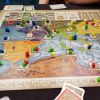
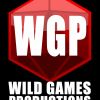
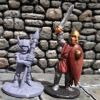
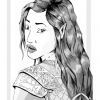


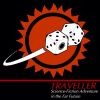


The Wall
In the '70s and '80s there would have been a HUGE fandom based on the popularity of the TTA books. Those books were DYNAMITE and probably helped set the feel of SF gaming despite never being directly used. (You can see a lot of TTA look and feel in Traveller...)
By 2006 there was no demand for this book and, as their attempt to rejuvenate the series would have shown them, there was no way to make demand. Anybody who wanted to game in the TTA universe was already doing so with other games--a task rendered simple by virtue of the fact that the books were almost ruthlessly focused on SPACESHIPS and installations, not people. You could fit almost any game system and it would work. Add in the terrible editing on the new book, plus the terrible information design of the game itself, and, well, there's a reason why this is a fringe game.
And believe me, it is as bad as I say. Stuff players need to make characters and actually play is mixed in with setting information and fluff in ways that makes it difficult to find. And, indeed, so difficult to find that even if you do use the ToC to get to character generation, you'll still need information in the info dumps to proceed ... with no cross-referencing nor easy stand-out way to spot it.